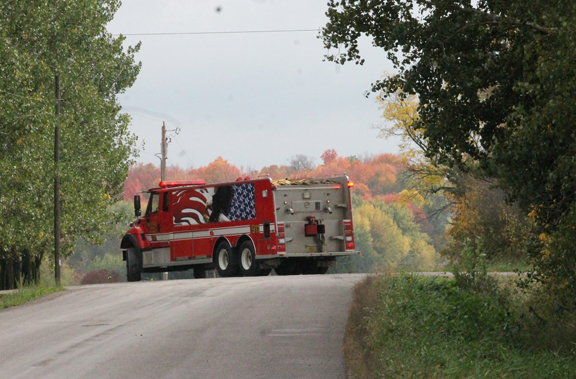– Climate and Health Effects –
– Climate and Health Effects –
Rural northern Wisconsin has many different organisms that cause vector-borne diseases. Climate change increases the amount and geographic range of vector-borne diseases, including Lyme disease caused by ticks.
The development and survival of ticks, their animal hosts (deer, white-footed mice, etc.) and the bacterium that causes Lyme disease, are all influenced by climate factors from increasing temperature, humidity and precipitation. Burning of fossil fuels, such as coal and gas, releases carbon dioxide in the air, which causes temperatures to rise. Warmer temperatures can cause longer and warmer-weather summers, earlier spring seasons, and shorter and milder winter seasons.
Warmer weather is more suitable for many carriers of vectorborne diseases, such as ticks, and milder winters result in fewer disease-carrying ticks dying during the winter. These changes increase the number and the percentage of infected ticks causing more people to be infected with Lyme disease (American Public Health Association; Centers for Disease Control and Prevention; United States Environmental Protection Agency, 2016).
Lyme disease is the most common vector-borne disease in the United States. The incidence of Lyme disease in the United States, has more than doubled since 1991, from 3.74 reported cases per 100,000 people, to 7.95 cases per 100,000 people in 2014 (United States Environmental Protection Agency, 2016). Although it is common, it is still one of the most misunderstood illnesses.
The disease often goes undetected, because it mimics other diseases and may be misdiagnosed. If it is not caught early and treated properly with antibiotics, it can cause serious health problems. Early signs of infection may include a rash and flulike symptoms, such as headache, muscle aches, fever and fatigue. If it is untreated, it can lead to severe neurological, heart and joint problems, because the bacteria can affect different organ and organ systems.
Although Lyme disease is the most common, there are other tick-borne illnesses, such as babesiosis and anaplasmosis. People infected with multiple diseases make diagnosis and treatment more challenging (American Public Health Association, 2015).
People who are at highest risk for Lyme disease, are people who work outdoors and/or spend leisure time outdoors. Occupations with an increased risk of exposure to infected ticks include construction, forestry, landscaping, brush clearing, land surveying, farming, railroad work, oil field work, utility work and park/ wildlife management.
It would be beneficial for employers of high risk occupations to provide health education for their workers and provide the proper personal protective equipment to protect their workers. A couple ways to prevent Lyme disease includes the use of tick repellent and/or wear long-sleeved shirts, pants and hats.
Lyme disease is costly, with an annual national economic impact of increased vector-borne illnesses of up to $786 million in societal and direct healthcare costs (Mac, da Silva and Sander, 2019). Climate change, infectious disease and our health, requires us prevent further warming to our climate.
Join organizations who have local chapters to support efforts to prevent increased climate change and infectious disease, such as the Sierra Club Foundation, the Environmental Defense Fund, the Nature Conservancy or the Natural Resources Defense Council! If you are a healthcare provider, consider joining the Wisconsin Professionals for Climate Action (wiclimatehealth. com) and/or the Alliance of Nurses for Healthy Environments at envirn.org.



